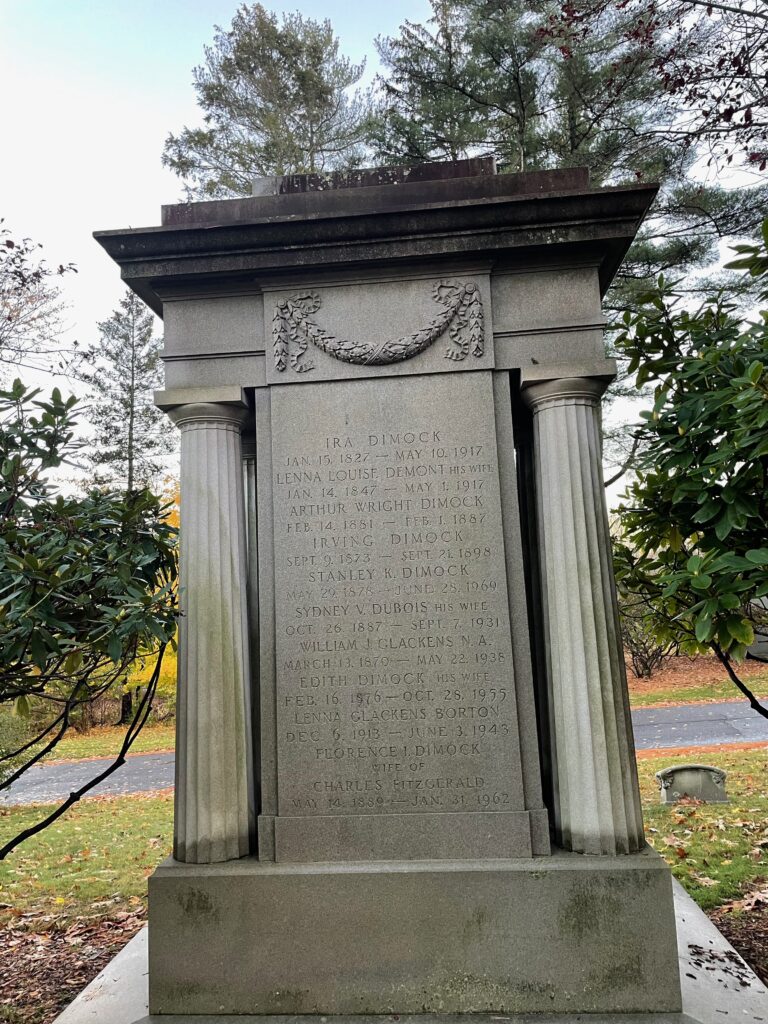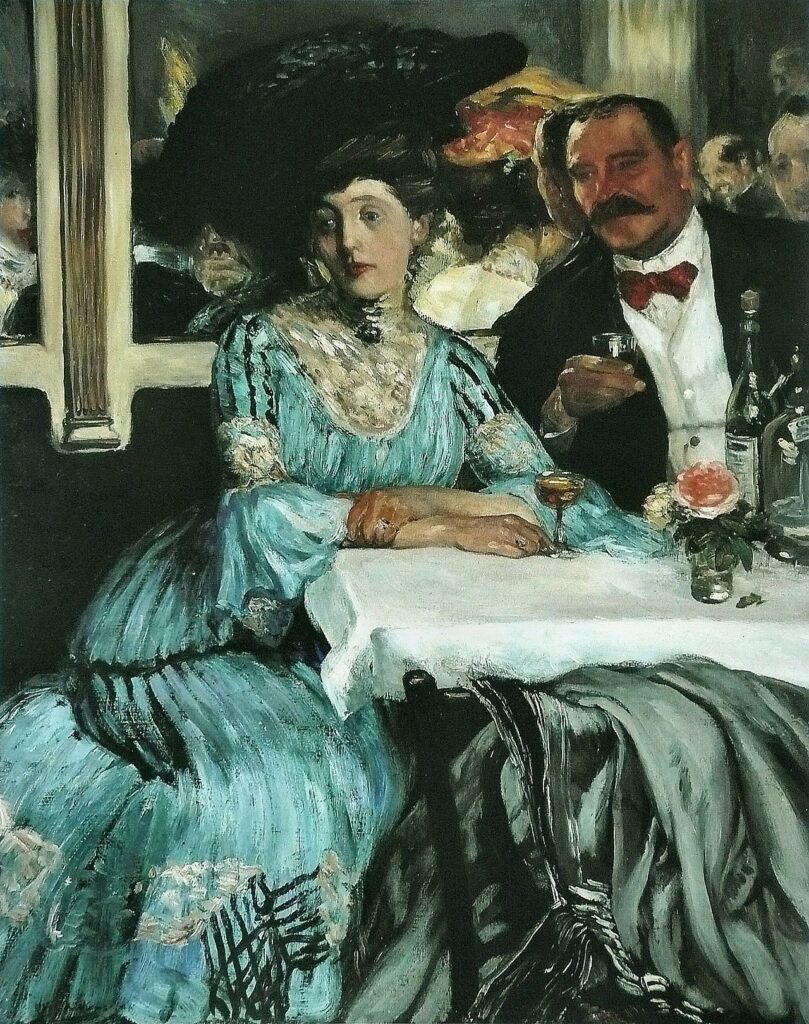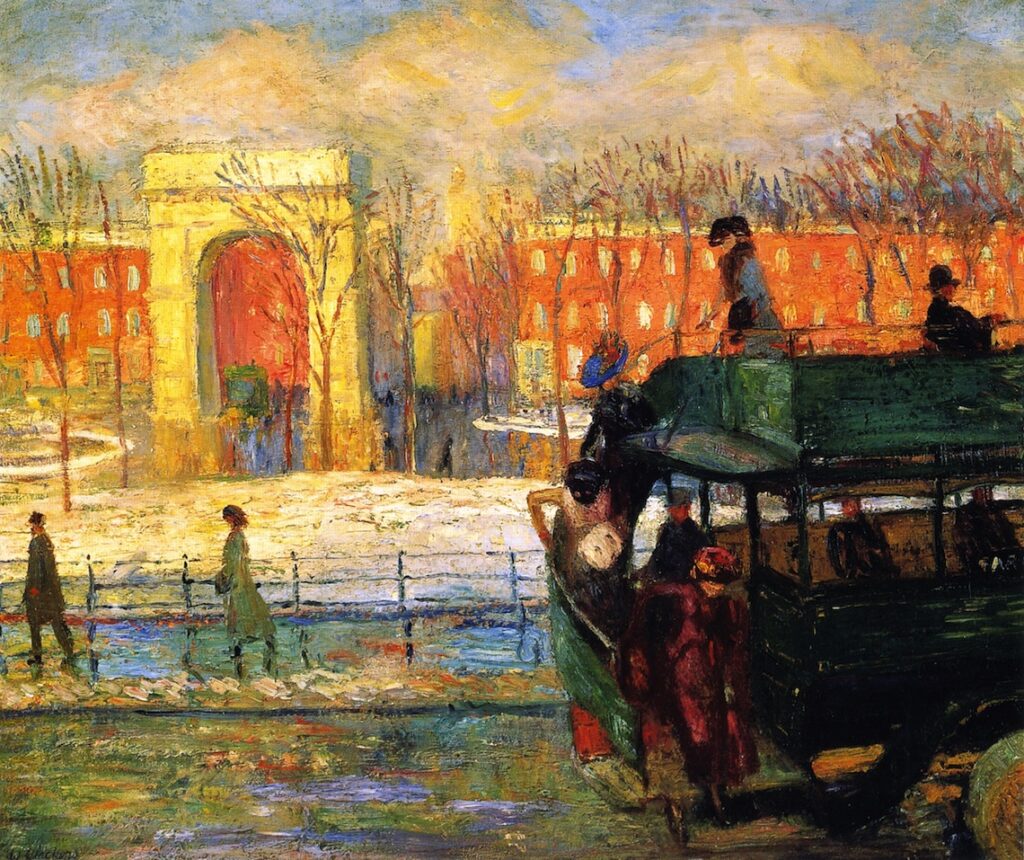Erik Visits an American Grave, Part 1,446
This is the grave of William Glackens.

Born in Philadelphia in 1870, Glackens grew up well off, went to the Pennsylvania Academy of Fine Arts, by most accounts was a terrible student, but still managed to have the money to go with a group of painters to Europe in 1895. He got caught up in the salon around the painter Robert Henri, which is what led to the Ashcan School of American art. I happen to love the Ashcan School, so let’s just get this out of the way. I get very tired of Gilded Age paintings about the rich or wannabe Europe. John Singer Sargent is a huge figure in American art, no question, but I find his topics tedious. So having a group of painters dedicated to painting real life in America, especially among the poor in New York City, is to me refreshing. This is obviously not one of the great movements in the history of art, but for what it is, I like it a lot.
Anyway, Henri was really the figure behind the Ashcan School beginning, but Glackens was also a critical figure. He lived in Paris on and off forever and was obsessed with French painting, especially Manet. He moved to New York in 1896 and got a job with the New York World. He would make money for years as an illustrator for the various New York papers and magazines. McClure’s sent him to Cuba during the Spanish-American War, for instance. By 1901 or so, his reputation as a real artist rose. He married Edith Dimock, another painter from a rich Connecticut family. Dimock would use her name for the rest of her life and was a more minor figure in the Ashcan School during these years. She raised the children, which of course limited her art time, while Glackens was the bread winner. Unlike many artists in their scene, they lived a very conventional married life.
Glackens was part of a big show of his contemporaries in 1908 that became the real founding moment of the Ashcan School as a publicly recognized thing. But he was never that comfortable being part of any movement and his interests began shifting anyway. He was such a huge fan of the impressionists that he basically moved toward that alone after about 1910. People were like, dude you are just copying Renoir. I don’t know really, but certainly that was the critique. He didn’t seem to care though. His old friend Albert Barnes, who had gotten super rich developing a treatment for gonorrhea, asked Glackens to go to Europe and buy him an art collection. He was happy to do so, bought about 20 critical works of French impressionism that became the core of the Barnes Foundation Collection. This became a big part of his later life. He did a lot of these trips buying art for rich people. Since he was less committed to the Ashcan thing generally, he embraced the rise of modernism very easily. He continued to paint, mostly in French styles, and his paintings remained well-received. He may be a relatively minor figure today, but he was a relatively important one in his time and he is one of those guys who probably has a painting or two at your local first rate art gallery that you may well just kind of walk by on the way to what you visited the museum to see.
Glackens died in 1938, I think of a heart attack, but it was considered a sudden death whatever it was. He was 68 years old.
For some reason, there is an entire wing dedicated to Glackens at the Museum of Art in Fort Lauderdale. Someone must have been a big fan. Over 500 of his works reside there. If I am ever unfortunate enough to visit Florida again, maybe I will go.
Let’s look at some of Glackens’ work.

Italo-American Celebration, Washington Square, 1912

Descending from the Bus (1910)

Young Woman in Green (ca. 1915)
William Glackens is buried in Cedar Hill Cemetery, Hartford, Connecticut.
If you would like this series to visit other members of the Ashcan School, you can donate to cover the required expenses here. George Bellows is in Brooklyn and George Luks is in Royersford, Pennsylvania. Previous posts in this series are archived here and here.




